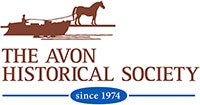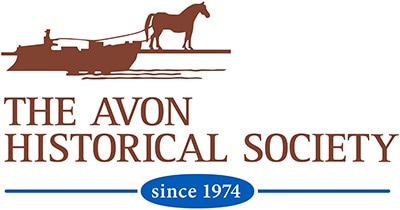“Unearthing History: Five-part webinar series #2 open to all from March – October 2022
“Unearthing History: The Discovery of a 12,500-year-old Paleo-Indian Site along the Farmington River in Avon, CT”
The Avon Historical Society, Avon Free Public Library, and Avon Senior Center are pleased to present a second five-part webinar series entitled “Unearthing History: The Discovery of a 12,500-year-old Paleo-Indian Site along the Farmington River in Avon, CT” beginning on March 10th held via Zoom through a link from the Library. It is available free of charge.
Register for the webinars at: www.avonctlibrary.info
This second series of five lectures are being held in response to the 2018-2019 excavation of a 12,500-year-old (10,000BC) Paleo-Indian site six feet below ground during a CT Department of Transportation construction project of the now completed bridge on Old Farms and Waterville Roads at Route 10 in Avon, CT. The survey uncovered more than 20,000 artifacts and structures that are characteristic of the Early and Middle Paleo-Indian periods. The site is named for Brian D. Jones, the late Connecticut State Archaeologist, who led the effort to dig deep based on earlier excavations in the area over the past few decades. As of this writing, this site is considered the oldest archaeological site of its kind in southern New England.
The “Unearthing History” webinar series will continue to explore many of the aspects of life and work on this continent over 12,500 years ago. Experts in the field of early genetics, ice age animals, Paleo-Indian foodways and trade routes, and ancient DNA will provide background and help in understanding the rich nature of this site. The Society, Library, and Senior Center, with cooperation from the Town of Avon, have taken the lead to provide educational events for the public on all aspects of the site for as long as the analysis takes to develop. They thank the Lower Farmington River and Salmon Brook Wild and Scenic Committee for financial support of this year-long series.
According to Dr. Lucianne Lavin of the Institute for American Indian Studies in Washington, CT, site of a slightly later Paleo-Indian site, the last Ice Age in this region began to melt away about 17,500BP (Before the Present). As it receded, a lush new land was exposed that provided for animal life to return about 13,500BP in the form of tundra-grazing animals such as mastodons, mammoths, horses, giant beaver, caribou, and more. The ancient communities of the Paleo-Indians are thought to have begun to arrive in the northeast after that time in search of those animals for food. They were the first settlers of what is now Connecticut and southern New England. (Connecticut’s Indigenous Peoples, by Lucianne Lavin, 2013, Yale University Press)
The first webinar entitled “What Genetics Teaches Us About the Peopling of North America” will be held on Thursday, March 10 at 7:00 pm. It will be presented by Dr. Jennifer Raff, an anthropological geneticist at the Univ. of Kansas. She studies the genomes of contemporary humans and their ancestors for insights into prehistory with a focus on the initial peopling of North America. The presentation is based on her May 2021 Scientific American cover story “Journey into the Americas” and her new book, Origin: A Genetic History of the Americas being released Feb. 2022.
The second webinar entitled “Ice Age Animals of New England” will be held on Thursday, April 7 at 7:00 pm. It will be presented by Dr. Sarah Sportman, Connecticut State Archaeologist & Dr. Nathaniel Kitchel, Dept. of Anthropology, Dartmouth. They will present the Pope Mastodon (found in Farmington on the grounds of Hill-Stead Museum) and the Mount Holly (VT) Mammoth, among other animals of the Ice Age.
The third webinar entitled “Paleo-Indian Foodways with Trade & Network Exchange” will be held on Thursday, May 12 at 7:00 pm. It will be presented by Dr. Jonathan Lothrop, Curator of Archaeology, The New York State Museum. His focus is on the Pleistocene (Ice Age) into the Holocene period where Natives colonized 11,000-8,000BC. His research is on their technology, settlement, and subsistence. He is a consultant on the Brian D. Jones site analysis.
The fourth webinar entitled, “aDNA – Ancient DNA” will be held in September, a date to be announced. It will be presented by Christina Balentine and Samantha Archer, Ph.D. candidates & research scholars at UCONN Dept. of Anthropology. They will present a broad spectrum overview on how & where aDNA is found and how it is analyzed.
The fifth webinar entitled “Update on the Scientific Analysis of the Brian D. Jones site in Avon, CT Since its Discovery in 2019” will be held on Thursday, October 13 at 7:00 pm. Held during Connecticut Archaeology Month, it will feature Dr. David Leslie, Senior Prehistoric Archaeologist of Archeological and Historical Services (AHS), Storrs, CT. He will provide an update on the site in Avon as AHS begins the fifth year of analysis of the artifacts and structures found there.
Partners in this series include the Farmington River Watershed Association, Institute of American Indian Studies, Washington, CT, and the Avon Land Trust. Special thanks to a planning committee of experts for assisting with developing this ongoing series: Dr. David Leslie, Archaeological and Historical Services; Marc Banks, Ph.D., LLC, Archaeologist; Nancy Najarian, Institute of Native American Studies; Beckie Sahl, Farmington River Watershed Association; Howard Wright, Renbrook School Science Department Head. Representing the three creating organizations are Terri Wilson, Avon Historical Society; Tina Panik, Avon Free Public Library; Jennifer Bennett, Avon Senior Center.
Click here to download a pdf of this press release


